If you are responsible for the safety of premises, buildings, or company you need to know how to protect them from unexpected dangers. Fire hazard is one of those unexpected dangers, knowing how to protect it requires you to know what fire extinguisher to use.
Can I use any fire extinguisher to put down a fire?
You can’t, and the answer is relevant to the extinguisher type and the fire calls.
In this article, we will break down to you the fire classes or degrees and what fire extinguisher types you must use to fight them.
Types of fire and why is it important to know the class?
In the line of fire, when trying to extinguish it, having an eye for the details could be the difference between causing a tragedy and preventing one. Identifying the fire type you want to extinguish is one of those details, and it helps significantly in fighting it.
On a global scale, there are five different fire classes, starting from A to F.
Each class is considered different from the other depending on its fuel component. Some classes start from liquid fuel sources and other solid fuel sources.
Knowing what class you are trying to extinguish is considered very important these days. Because like fires, there are also different extinguisher types. Using the wrong type to extinguish one could lead to dangerous consequences.
For example, if you want to extinguish a fire of class B with a water extinguisher will only make things worse for you. Because class B fires considered flammable liquid and using water will only make it more dangerous.
The concept behind having different fire extinguisher types is that each fire type has a different flammable element that fuels them. Each extinguisher type specializes in eliminating and extinguishing flammable elements.
This is the idea behind why you should know fire classes? But what does this class mean?
K heading of type A, B, C, and D
- Class A: all fires that involve flammable solid elements such as woods, paper, or plastic. Class A fires are considered the most common fire accidents, and fortunately, they are easy to deal with and extinguish by using a water fire extinguisher.
- Class B: all fires that involve liquid elements such as oil, alcohol, petroleum grease, and all that follows as a fuel source. For this particular class, it’s advised to avoid using water to extinguish them.
- Class C: all fires that are caused by an electrical fault, could be a bad wiring system or any other electrical issues. To avoid a class C fire it is recommended to hire a qualified electrician to make your electrical inspection.
- Class D: all fires that are caused due to a metal ignition, in other words burning metals like lithium and magnesium. This fire class is considered rare to happen, but in case you face one use a wet chemical fire extinguisher type. That’s the only efficient type against class D fires.
Types of fire extinguishers
Till this point, you are able to identify fire types and the differences between them. Your next step is to know the different extinguisher types and how they work. Lastly, what are the extinguisher types that are suitable for fighting each fire class?
1- Water extinguishers
Water extinguishers come in a bright red label color, with a white water extinguisher word on it. Considered as the most common and the most demanded fire extinguisher in the UK.
Water extinguishers help to cool down flames and class A fires, due to their ability to disturb high-pressure water. As mentioned before, class A fires are the types that contain burning solid elements such as paper, wood, plastic, coal., etc.
The red water extinguisher will help to put out the flames on such a solid item by reducing the pyrolysis rate from the fuel source.
Using a water extinguisher is quite easy, just point the jet to the burning flames and start to move around the flames. The water pressure cooling effect will do the work and put out the burning flames.
Typically, the places that may need a water extinguisher would be schools, shops, hospitals, metro stations, buildings, offices, etc
Can we apply water extinguishers to other classes of fire?
No, you can’t, because water extinguishers may contain chemical components that may work as a fuel source. So rather than putting off fires, you will make it more dangerous.
Please avoid using water extinguishers on the following
- Class C fires that involve electrical equipment
- House fires that involve cooking oil
- Class B fires that involve liquid fuel
2- Powder extinguishers
Powder extinguishers are considered wildly popular because you can use them in the first three fire classes A, B, and C. This type of fire extinguisher is considered more suited for class C fires that include electrical equipment.
Powder extinguishers contain powder and other chemical components, its powder works as thermal ballast. Meaning it can put down flames, but its efficiency is relevant and somehow relatively weak compared to other extinguishers such as water extinguishers.
Powder extinguishers have another release, the special dry powder extinguisher that works on class D fires.
How to use it?
Using powder extinguishers is the same as using any other extinguisher type, point the jet on the flames you want to cool down. Starting moving it and targeting crucial flame points.
The places that may need this type of extinguisher will include garages, weldings, boiler rooms, etc
3- Foam extinguishers
Foam extinguishers are more suited for putting out burning liquid flames. Yet, considering they are water-based extinguishers you can use this type on class A fires. Foam extinguishers can be used to cool down flammable solid materials such as paper, clothes, wood, plastic.
You can also use them to put down liquid flames such as oil or grease.
Foam fire extinguishers are also suited for electrical fire with 35KV, make sure your equipment is tested before and make a 1m distance while using this fire extinguisher type.
Using it is the same as using the once before, point the fire extinguisher jet on the burning flames and cool them down.
This fire extinguisher is more suitable for schools, hospitals, apartments, and shops.
Please note that this extinguisher type is dangerous on house fires, great voltage electrical equipment, and class D fires.
4- Carbon Dioxide extinguishers
Carbon dioxide extinguishers or simply CO2 extinguishers, come in a black label color. This extinguisher model is considered suited for causing electrical fires. Carbon dioxide extinguishers are CO2-based extinguishers, they help to replace the air with CO2 which helps to extinguish the fires.
However, it is relatively weak, in case a CO2 extinguisher runs out of CO2 the air will get back and it causes ignition. The disadvantage of using this extinguisher type is you can use it for only from 6-10 seconds.
It advised to not use dioxide extinguishers to fight fires of class A, class C, Class D, and house fires
Usually, you find these extinguishers in server rooms, tech rooms, and offices.
5- Wet Chemical extinguishers
This extinguisher type helps cooling down fires of class A and house fires including fat fires and cooking fires. Wet chemical extinguishers contain chemical agents that help to extinguish fires by creating a foam layer on the burning surface.
Usually, this extinguisher type is used in kitchens, buildings, schools, or restaurants. Just remember when using it to slow your movement a little till you ensure the foam layer is created.
Avoid using wet chemical extinguishers against class B fires, it’s recommended due to chemical reactions that could make it even dangerous.
Make sure your business is protected
Saving lives and preventing fire accidents is considered a priority for every business owner, building, and house. To prevent fire accidents, always ensure you have installed the right extinguisher type.
Make sure your extinguishers are up to date, full, and installed near a fire source. For your precaution develop an evacuation plan and make periodic fire assessments. You should check if your fire extinguishers tested properly with certified accessors.
If you don’t know how to carry out an efficient fire risk assessment check our fire risk assessments guide.



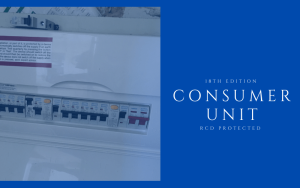
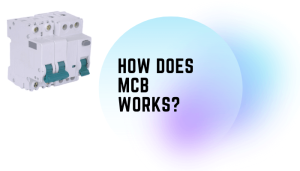

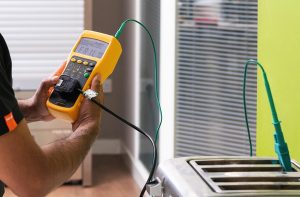
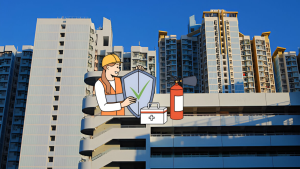
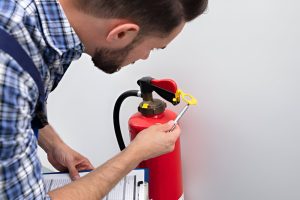
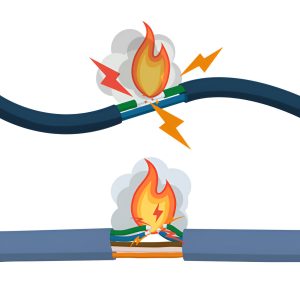

6 thoughts on “Types of Fire extinguishers: Comprehensive Guide”
Simply wish to say your article is as amazing. The clearness in your post is just nice and i could assume you’re an expert on this subject. Well with your permission let me to grab your feed to keep updated with forthcoming post. Thanks a million and please carry on the gratifying work.
I’ve read several just right stuff here. Certainly price bookmarking for revisiting. I wonder how a lot effort you place to create this kind of great informative website.
I have been browsing online more than three hours today, yet I never found any interesting article like yours. It is pretty worth enough for me. In my view, if all website owners and bloggers made good content as you did, the internet will be a lot more useful than ever before.
Thank you for addressing such an important topic in this post Your words are powerful and have the potential to make a real difference in the world
Your posts always provide me with a new perspective and encourage me to look at things differently Thank you for broadening my horizons
Hi my family member! I want to say that this post is awesome, nice written and come with approximately all significant infos. I would like to peer extra posts like this.